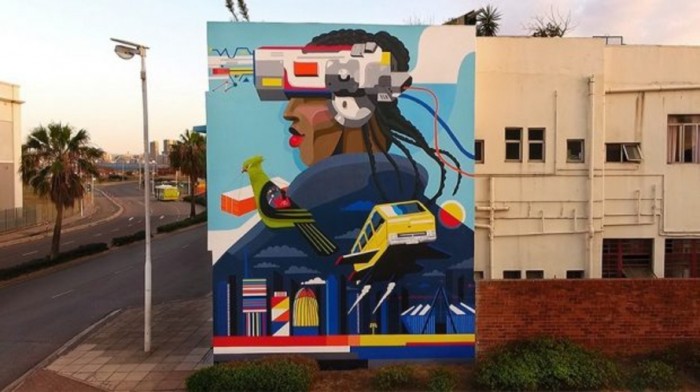For the last decade Wesley van Eeden (also known as Resoborg) has been working across the art and creative landscape. A couple of weeks ago he launched the Southapedia Mural Festival in Durban.
The fromer Design Indaba Emerging Creative says the project works with local street artists, including Paul Senyol (who was also part of the Design Indaba Emerging Creatives programme), Conform, Blessing Samukele and Gabriel Katsande to create murals inspired by Durban's culture, history and its people.
The festival also worked with NGO, Surfers Not Street Children, where some of the artists hosted an introduction to street art for the children involved with the NGO.
“My biggest inspiration to start the Southapedia Mural Festival was after I was invited to paint a mural for Staufferstadt Arts, in Virginia, US. The project involved bringing contemporary urban art to a rural town. Seeing how the art inspired and celebrated the town, inspired me to create something similar in my hometown,” says Van Eeden.
“It showed me that with a bit of work it is possible to create something in Durban as well. Too often we wait for opportunities to come to us instead of creating them!”
Not only did Van Eeden create the festival to celebrate the local culture of his hometown, but he also created opportunities for local artists to be paid to create professional murals in a town that lacked funding for local artists, as well as creative opportunities.
Together the artists created three major murals around the city centre.
He collaborated with Samukele and Katsande to create a mural titled Back to The Future. Sponsored by Innovate Durban, a company whose focus is on stimulating innovation in the KwazuluNatal region, the mural depicts a woman with a VR headset, with flying taxis and robotic birds in the foreground.
According to Van Eeden, the art is a commentary on what the future of Durban could look like, as well as the potential for growth and opportunity in the city.
The artwork of street artist, Conform, is made up of clean vector work, hand-drawn and organic shapes. The fluidity of the art comes through the use of pastel colours, adding a sense of calm to the work. For the Southapedia Festival he created a mural that celebrates the architecture of Durban and the city’s skyline.
Conform says his inspiration comes from anything or nothing: "Because I’m the type of artist that simply draws from the imagination. I hardly use any references and only when I need to.”
He adds: "Street art allows people to interact or put their mark on your work, and I am the kind of artist where I’m fine with those kind of things because then it evolves into another kind of art form.”
Speaking about the future of street art in the country and the continent Van Eeden notes that there is an incredible amount of talent coming out of the continent and the industry is growing.
However, the industry still has a long way to go before reaching the levels of popularity seen in places like Europe such as the US.
“Street art can be used to help uplift communities and shift perspectives, and since we are a developing continent, I can only see it growing and getting bigger,” says Van Eeden.
“Street art is free to the public and has no boundaries or social status and is free for all that get to experience it. It is one of the artistic expressions that really can be experienced by everyone,” he adds.
Read more:
Chad Hanning on the importance of street art
London street gets the Yinka Ilori happy treatment
Art for the soul and your lungs









